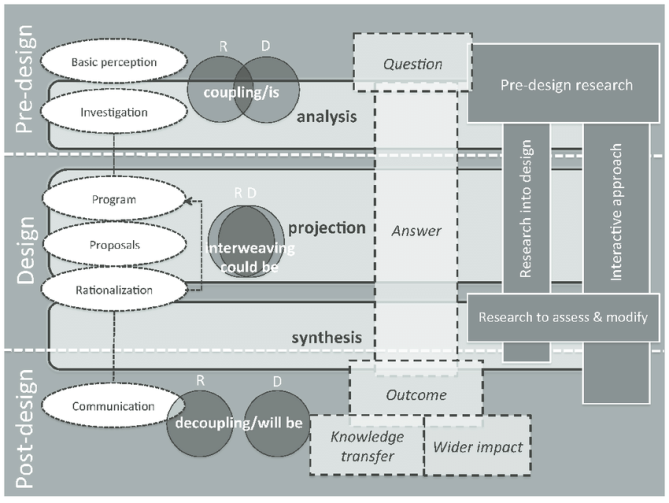
Roggema merges the understandings of Jonas, Millburn & Brown, Hauberg, Basballe & Halskov and Lima et al. to produce a series of diagrams indicative of the research by design process:
- According to Jonas there is a fundamental distinction between analysis(the way things are)/ projection (how things could be)/ synthesis (how things will be)
- According to Millburn & Brown there are five models that explain distinct approaches of incorporating research into design: artistic, intuitive, adaptive, analytical and systematic. They all have a pre-design phase that resembles the analytical one mentioned earlier.
- According to Lima et al. research by design should demonstrate a question to be addressed. Projection then becomes the phase when adequate answers are sought using non-textual artifacts. The final stage synthesis brings forward the outcomes of the research, but also a knowledge transfer with a wider impact
- According to Hauberg, first stage focuses on perceptions and investigation; second phase to program/proposals and rationalization and the third phase to communication.
- According to Basballe and Halskov there is a coupling in the first stage that unites research and design interests/ in the second there is an interweaving as they influence each other/ decoupling appears during the production phase and final evaluation
More available here
References
Roggema, R., 2017. Research by design: Proposition for a Methodological Approach. In Urban Sci Vol. 1, no. 2; doi:10.3390/urbansci1010002
Image available here
